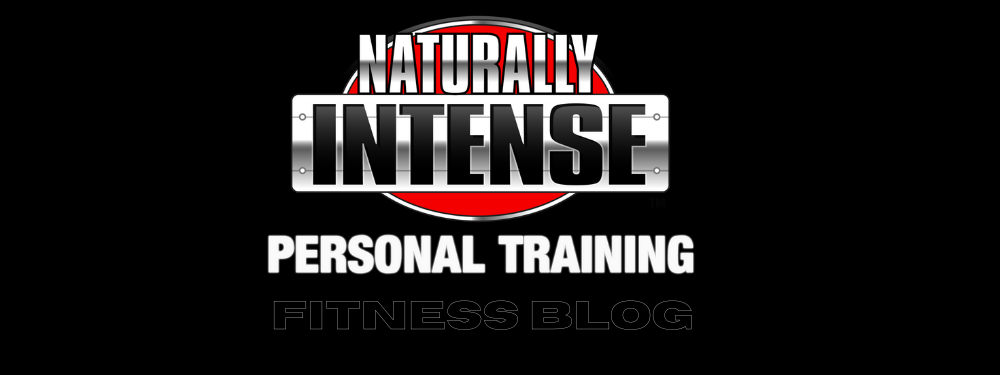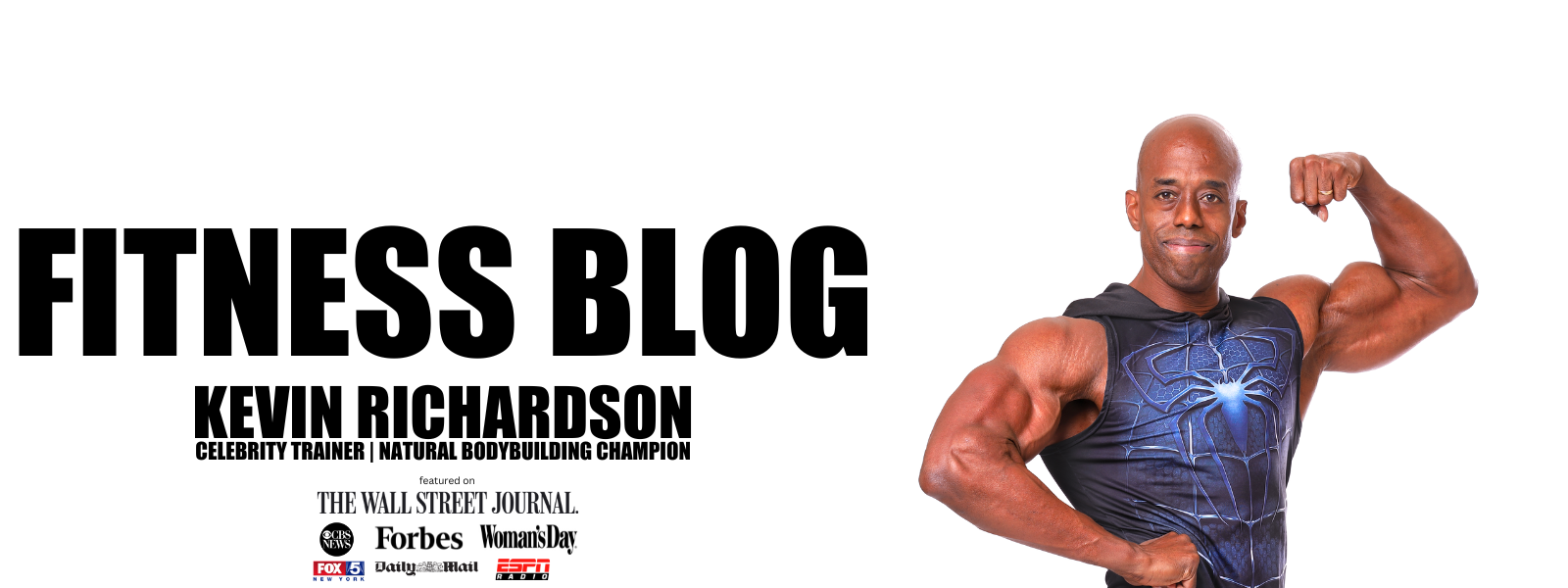
Does Race Affect Your Ability To Lose Weight?
A number of environmental and genetic factors influence our ability to lose weight and or gain weight, however the idea that race, or to be completely accurate, ancestral origin, may play a role is relatively new. It was believed, (and is still widely believed and even taught today), that if two individuals of the same gender, same body mass and same composition ingested the same amount of calories and did the same physical activity, the total energy expenditure should be the same. If this is the case, it should hold true regardless of whether the subjects were White, African American, Asian or Hispanic. It’s a premise that served for decades as the foundation for all clinical diet and exercise recommendations and you would think that these principles were set in stone. They are not, as weight loss is an extremely complex issue and factors such as ancestral origin and food timing throw these numbers off significantly. A growing body of research continues to show that differences in ancestry lead to measurable and significant variations in metabolic rates. A major factor in weight loss and weight gain as research shows that individuals of African descent appear to burn as much as 15% LESS calories while at rest compared to someone of European ancestry even if they both are of exactly equal body mass.[1,2,3,4] In this article we will take a look at metabolic differences between men and women of different ancestral backgrounds and explore how relevant those differences may affect your own attempts at weight loss. It’s a fascinating study and I encourage you to share it with anyone who you think might benefit from reading it.
Differences In Obesity Occurrences Between African Americans & Other Ethnic Groups
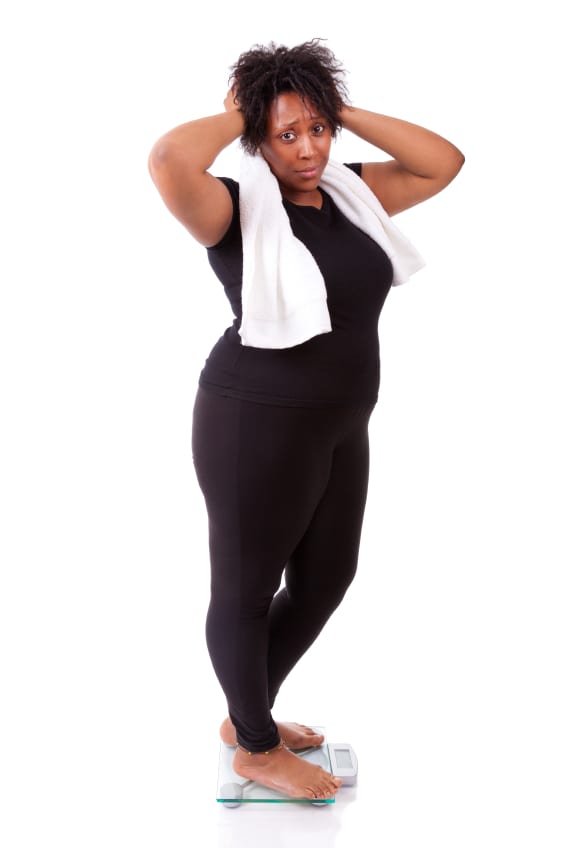
The finding that measurable differences in metabolism exist based on ancestral heritage calls into question the effectiveness of low calorie diets as a weight loss tool in certain populations. Socioeconomic, cultural and dietary practices aside, it may also shed light on why African Americans have higher risk of obesity, diabetes and the metabolic diseases that commonly accompany obesity.[5, 6, 7] Of all the ethnic groups in the United States, African American adults have the highest rates of obesity. With an obesity occurrence of 45%. Contrast this number with the 35 % rate for Hispanic American adults, and 30% for Caucasian American adults. Adult African American women have even higher rates of obesity relative to other ethnic groups with a staggering 49% occurrence rate, and in cases of extreme obesity, where Body Mass Index is over 40, African Americans have the highest percentage of adults in that range. 13.5% of African Americans are extremely obese according to the latest figures, compared to 5.7% among Hispanic Americans and 5.5% of Caucasian Americans.[15] These numbers remain higher even among African Americans children and adolescents who exhibit between 3-11% higher rates of obesity when compared to Caucasian Americans of the same ages.[15] It would be naïve to blame innate metabolic differences for such wide discrepancies in rates of obesity between African Americans and other ethnic groups, however it might be one of many factors.
Does Race Affect Your Ability To Lose Weight? Understanding Metabolism
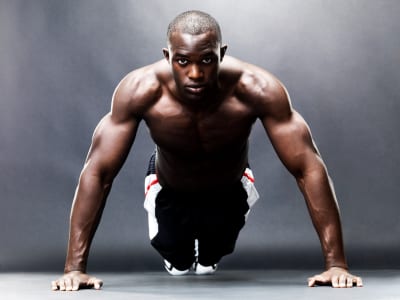
To grasp the implications of differences in metabolism we should start with a discussion of how our metabolism actually works. There are two ways that our bodies burn calories, through voluntary energy expenditure and involuntary energy expenditure. Voluntary energy expenditure refers to the energy we expend doing activities such as walking, working, exercising and such. Voluntary energy expenditure is, (for the most part), selectively modifiable, as you can control how much energy you expend on a daily basis by doing more or less activity over the course of the day. On the other hand, involuntary energy expenditure is not selectively modifiable as it refers to energy our body and organs use to stay alive. Brain function, respiration, digestion, elimination, smooth muscle activity like the beating of your heart are out of our individual control and require a tremendous amount of energy. So much so that involuntary energy expenditure can make up as much as 60-80% of total energy expended daily. [4] An amount large enough to play a significant role with regards to calculating energy requirements for someone to lose or gain weight and as we have said, for many years it was thought that this aspect of metabolism was a constant for everyone of equal body mass. Recent findings show that this simply is not the case.
Differences in Metabolism Among Races
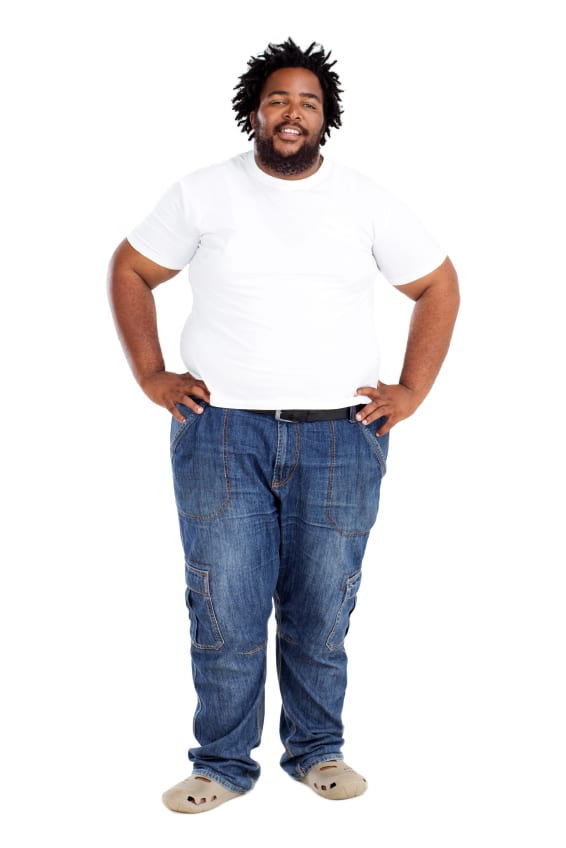
A peer reviewed study of over five thousand men and women found that individuals of African descent expended an average of 164 fewer calories per day compared to those of European origin due to a lower resting energy expenditure.[1] This discrepancy increased to as much as 308 calories a day less when adjusted for variations in age, gender, education and income. [1] Another large scale study of 3,075 people found remarkably similar differences between European Americans and African Americans as those of African descent were observed to have a sleeping metabolic rate that was 85-100 calories per day lower than European Americans of the same body mass.[4] The study found an almost identical 160 calorie per day difference between a population of individuals genetically confirmed through testing as being of African ancestry and a population confirmed to be of completely European origin.[4] Both studies found these differences to be constant even when taking into consideration differences in lean muscle mass and possible thyroid dysfunction.
Possible Reasons For Differences In Metabolism Among Those Of African Descent
Researchers cannot conclusively pinpoint why metabolic rates are so much slower among those of African descent, but there are some theories put forward to account for the differences. One theory is that the smaller fractional mass of certain high metabolic rate organs in individuals of African descent might explain the lower resting metabolic rate when compared to European Americans. [8, 9] Organs, brain matter especially, require a significant amount of energy for every day function and an MRI comparison of brain, liver, kidney, spleen and other organs between those of European ancestry and those of African descent found smaller organ sizes among those of African ancestry. When adjustments are made for lower metabolic requirements due to the relative organs size differences it seemed to account for the differences in resting metabolic rates.[8,9,10]

Another theory places the differences as a result of selective changes brought on by environmental pressures when early humans migrated to higher latitudes.[11,12] The process of oxidative phosphorylation in the mitochondria generates ATP which is required for muscular contraction and is the main energy source for the majority of cellular functions. This mitochondrial process also reoxidizes the energy rich co-enzymes NADH and FADH2 which allow for continued generation of ATP and serves to regulates body temperature through heat production by the coupling state of the mitochondria.[13] A lower resting metabolic rate therefore would allow for maximizing the conversion of energy to ATP instead of heat- creating a more energy efficient body capable of doing more physical activity. Which makes sense as a human living in tropical Africa, where the environmental temperature is close to human body temperature would not need to generate excess heat in order to survive. Adaptive mitochondrial changes (mutations) brought on by the changes of environment and temperatures as humans migrated away from the equatorial climate from which we originated, developed a higher resting metabolic rate through higher rates of mitochondrial uncoupling.[12] This adaptation generates more body heat which was essential for survival in colder climates, but it also seems to have given those of European descent a method to compensate for high energy intakes in times of caloric abundance. If those of European descent burn more calories as an adaptation to the cold, it would stand to reason that they would not be as adversely affected by a superabundant food supply. Which could help explain why African Americans have higher rates of obesity than those of European ancestry in our era of where processed foods make high calorie intakes all but unavoidable.[4] Is the discrepancy due to smaller organ mass or mitochondrial adaptations, or a combination of both? We don’t yet know but what we do know is that it does make a universal weight loss approach obsolete.
Practical Implications Of Racial Differences In Metabolism for Weight Loss

With these new findings in mind, the studies conclude that African Americans would need to eat less calories than the average American, and or be more physically active than the average American in order to reduce their body weight below that of the average American.[1] Recommendations for lower calorie intakes are problematic however, as a significant body of studies confirm that low calorie diets are not effective long term for the general public.[20,21,22] As such, a call for more stringent dietary practices and or more exercise for African Americans is somewhat impractical, since the general population is largely unable to adhere to the conventional daily dietary and exercise recommendations to begin with. Furthermore, lowering calorie intake can lower metabolic rate, as the body can go into a “starvation mode” to conserve as much energy as possible if energy intake is too low for a period of time. A protective response that saved our ancestors from hundreds of thousands of years of famines and inadequate food intakes, but one that hampers and frustrates our modern attempts to lose weight. Lowering calorie recommendations could thus make weight loss even less likely.
Recommendations for increasing exercise and physical activity levels are always welcome among the statistically small number of fitness enthusiasts who believe more time exercising is the universal answer to all weight and or health problems. But the realities of modern life makes even the current recommendations of 2 ½ hours of exercise plus 2 bouts of strength training difficult for most.[17] Real world studies affirm that the number one reason for lack of adherence to an exercise program is lack of time[18] and in an era where most Americans are unable to meet even the minimum exercise guidelines, it would be futile and unrealistic to recommend an increase for African Americans.
Practical Solutions For Dealing With Lower Resting Metabolic Rates
Both recommendations are not viable solutions and if resting metabolic rate accounts for 70-80% of total daily energy expenditure, the focus should thus be on increasing it. Apart from our organs, fat free muscle mass is the most metabolically active tissue in our body, and increasing skeletal muscle mass through resistance training leads to an increase in resting metabolism.[23,24] Skeletal muscle is also crucial for maintaining proper blood glucose levels and energy balance,[25] and increasing muscle mass through the use of high intensity protocols not only calls for shorter training times but also decrease body fat through excess post exercise oxygen consumption. [26,27]
How Relevant Is Lower Metabolic Rates Among Those Of African Descent?

The problem with this body of data is that it is difficult to translate lower resting metabolic rates into an actual cause of higher obesity rates in African Americans. We are hardwired to believe in causality, the idea that a single and easily understood event is responsible for a particular phenomenon, but as far as obesity is concerned, there is no single cause. Instead obesity is like a web of connecting environmental, genetic, dietary and activity related factors that make it occur and the evidence of lower metabolic rate is just one more strand on the web. All studies found a correlation between lower resting metabolic rates and African ancestry, however the greater the percentage of European ancestry the individual had, the higher the resting metabolic rate would be. This difference has been positively linked to single gene polymorphisms whose proportions vary by race, and each percentage increase in the proportion of ‘European’ polymorphisms among those who identified as African Americans corresponded with an approximate 1.5 calorie per day increase in resting metabolic rate.[4]
We identify ourselves using cultural and physical attributes as a method of inclusion in any particular race or ethnic group, however, without genetic testing there is no concrete way to know what proportion of gene polymorphisms we carry from any group. This is especially true among African Americans, who are the progeny of ancestors subjected to forced migration to the Western Hemisphere from Western Africa and enslavement for several hundred years. Circumstances that often makes accurate estimation of bloodlines difficult if not impossible without genetic testing. Thus it’s hard for anyone identifying as African American to know how relevant resting metabolic rate differences might be for them as an individual without DNA analysis. Furthermore, the prevalence of obesity and associated metabolic diseases is far lower among populations in West Africa and West Africans who have recently migrated to the United States [14,16,28] thus invalidating the possibility that a lower resting metabolic rate alone could be responsible for higher rates of obesity among those of African descent. Rates of obesity are on the rise in the Caribbean, which also has a large population of West African descent as a result of the slave trade, but are still not as high as among their African American counterparts.[14] This confirms that physical activity, along with diet and physical fitness might be far more relevant- as are differences in social and economic living conditions.[6]
In almost three decades of working with hundreds of individuals from every region on the planet, I have never encountered any differences in weight loss progress or among those trying to increase muscle definition, that could be attributed to ethnic origin. One explanation could be that a system based on increasing muscle mass and activity levels while keeping calories within moderate but never low ranges, might invalidate any differences in resting metabolism as it would increase resting metabolism regardless. What we do come away with from this data set is that blanket diet and exercise recommendations for the general public are impractical at best and misleading at worst. Especially given differences identified among populations and that any program of diet and exercise should be designed with the individual in mind.
High Intensity Bodyweight Training: Ballistic Pushups & Dips!
This was a tough one!
Starts out with ballistic push ups (like clap pushups but without the clap as my wrist is still not 100%) nonstop for 20 reps, then all out on dips for 10 reps.
To say it was painful would be an understatement, but you just have to push through and keep on going.
Still training, hope you are too and as always, Excelsior!!! #naturallyintense
#hometraining #homeworkout #homeworkout #highintensitytraining #naturalbodybuilder #naturalbodybuilding #fitover40 #naturalbodybuildingvideos #chestday #chesttraining #naturalbodybuildingtips #pushups #dips #bodyweighttraining #highintensitytrainingtips #drugfreebodybuilding #calesthenics
Kevin's Unconventional Biceps Training- 3-6 Minutes a Week!
In this video I go over my biceps training using the Naturally Intense High Intensity Training protocols that helped me go from having arms measuring 11.5 to 12 inches to 18 inches drug free!
It's an unconventional approach for certain, but it's one that's helped my arms grow and the hundreds of men and women I have trained over the past 30 plus years.
Now, my success isn't due to being genetically gifted, as it took me the better part of 11 years to get my arms up to those measurements.
Which is significant as it works and been been proven time and time again to work for the average man or woman trying to grow their arms without drugs.
It's my hope that these high intensity training protocols can help you as much as they helped me!
Click on my bio link to see the full video on my YouTube channel and thanks as always for taking the time to look at my work!!! Excelsior!!! #naturallyintense
#highintensitytraining #naturalbodybuilder #naturalbodybuilding #fitover40 #naturalbodybuildingvideos #armworkout #bicepsworkout #naturalbodybuildingtips #biceps #armtraining #highintensitytrainingtips #drugfreebodybuilding #barbellcurls
At the Lancaster Classic Day 2 Elimination Rounds Against European Champion, and World Record Holder Leo Pettersen @leo_barebow_archer
I don't talk much about it but I'm also a competitive barebow archer (surprise!) and last Saturday I had the honor of making it to Day 2 at the Lancaster Archery Classic in the Barebow Division, as I made the top 64 out of 267 competitors and had a chance to shoot with some of the greatest barebow shooters on the planet!
I didn't make it past Leo, but it was a real rush to be there and a huge thanks to my coach, Joe MyGlyn @prolinearchery for helping me get there.
Thanks as well to my good friend @sean_chan33 for all of his help from the very start, to my line buddy Aaron Shea for taking the shot and showing up to support!
My thanks as well to rob_kaufhold for putting on and promoting one of the best archery tournaments on earth!
Thanks also to to everyone who took the time to send a supporting word and I am looking forward to next year!!! #naturallyintense #barebow
#lancasterclassic #lancasterarcheryclassic2024 #lancasterarchery #archery #fitover40 #barebowrecurve #targetarchery
Dumbo, Brooklyn circa 2004
This shot was taken as part of the promotion for my Naturally Intense DVD and was about a year after my last bodybuilding competition.
It was a grueling photoshoot.
We started at about 10 am and finished around 4pm and I was completely spent, but the more we shot the sharper I looked, so we kept on going.
It's nice to look back from time to time and as tired as I was, we all had a blast!
My thanks to @stephanie_corne_artwork, @https://pulse.ly/itgnag2dec and @ftaz1 for taking the shots!!!
Thanks for watching and as always, Excelsior!!! #naturallyintense
#naturalbodybuilder #naturalbodybuilding #throwback #fifthavenuegym #5thavenuegym #drugfreebodybuilding #naturalbodybuildinglifestyle #gymlife #gymmotivation #naturalbodybuildingmotivation #bodybuilding #blackandwhite #instablackandwhite #bnw
Can You Build An Impressive Physique Training Only At Home?
Absolutely!
I stopped training in commercial gyms as of March 2020 and have been training at home ever since.
Initially I was admittedly worried that I might lose some of my gains or not make as much progress, but that certainly wasn't the case.
I've consistently continued to improve with my high intensity workouts and muscles have no idea where they are training.
As long as the criteria of adequate intensity and overload are met, there will be an adaptive response and your muscles will get bigger and stronger.
So don't worry at all about where you train, focus instead of what will be the best way for you to always be training!
Thanks for watching and as always, Excelsior!!! #naturallyintense
Kevin's Three Day Training Spilt!
For the past 33 years I have trained three times a week with Naturally Intense High Intensity Training workouts lasting 10, 15 to 20 minutes max.
It's a training split tried and testes not only in it's helping me realize my goal of becoming a successful natural bodybuilder, but it's also helped hundreds of men and women over the past three decades.
I have tested just about every possible training split imaginable and for this particular style of high intensity training, this particular grouping consistently yields fantastic results.
I hope it helps you as much as it's helped me over the years and thanks so much for taking the time to look at my work.
Keep training hard and Excelsior!!! #naturallyintense
Excelsior!!! #naturallyintense
#trainingsplit #3daytrainingsplit #threedaytrainingsplit #naturalbodybuilding #naturalbodybuilder #naturalbodybuildingvideo #naturalbodybuildingmotivation #naturalbodybuildingtips #drugfreebodybuilding #bodybuilding #highintensitytraining #highintensitytrainingtips
405 Stiff Leg Deadlift for 7 Reps! High Intensity Training.
First leg workout of the year and already pushing it!
I haven't done a stiff leg deadlift over 315lbs for about 3 years at this point, and I did my last set with 315lbs and comfortably got to 10 reps and decided I had far too much gas left in the tank and that I should go up in weight.
So I did.
I figured I might get a solid 6 reps in, but I made it to 7 and I think I could have gone on to get a full 10 reps BUT that's when good judgement prevailed.
As a bodybuilder having not trained this heavy for so many years, the shock of this much weight would be more than enough to stimulate muscle growth, and doing more reps wouldn't yield any greater returns, only increase the likelihood of injury.
It's not about the numbers, it's about training to a point where you achieve your goal, and it's important to have a goal in mind as a bodybuilder based on increasing muscle mass rather than hitting a particular number.
Besides, if in my 20's I never did more than 405lbs on a stiff leg deadlift, it doesn't make any sense going heavier than when I am almost 50!
Could I deadlift more at this point?
Absolutely but just because you can doesn't mean you should!
So keep those weights in a good working range, keep it safe and as always Excelsior!!! #naturallyintense
#hometraining #homeworkout #homeworkout #roguerack #highintensitytraining #naturalbodybuilder #naturalbodybuilding #fitover40 #naturalbodybuildingvideos #backworkout #naturalbodybuildingtips #backtraining #highintensitytrainingtips #drugfreebodybuilding #fitoverforty #deadlift
Turning 50 in a few months...
Not much of a big deal for me as I still feel pretty much the same but I hope that my example helps show what can be done with a lifetime commitment to eating well and training consistently!
Thanks for coming along on the journey and as always, Excelsior!!! #naturallyintense
#naturalbodybuilder #naturalbodybuilding #healthylifestyle #fitover40 #drugfreebodybuilding #naturalbodybuildingmotivation #natty #fitness
Please note that all material is copyrighted and DMCA Protected and can be reprinted only with the expressed authorization of the author.
Featured everywhere from the Wall Street Journal to CBS News, Kevin Richardson’s Naturally Intense High Intensity Training have helped hundreds lose weight and transform their bodies with his 10 Minute Workouts. One of the top natural bodybuilders of his time, Kevin is also the international fitness consultant for UNICEF and one of the most sought after personal trainers in New York City. Learn more about his award winning personal training services here!
References for Does Race Affect Your Ability To Lose Weight:
1. N Sava-Sava, E Velasco-Mondragon, MB Hossanin, Y Bronner. Energy Expenditure Differs between Black and White Americans: Implications for Obesity Prevention Research. Food & Nutrition Sciences 2012
2. T. A. Sharp, M. L. Bell, G. K. Grunwald, K. H. Schmitz, S. Sidney, C. E. Lewis, K. Tolan and JO Hill, “Differences in Resting Metabolic Rate Between White and African-American Young Adults,” Obesity Research, 2002.
3. A. Luke, L. Dugas and H. Kramer, “Ethnicity, Energy Expenditure and Obesity: Are the Observed Black/White Differences Meaningful?” Current Opinions in Endocrinology, Diabetes & Obesity, 2007
4. T. M. Manini, K. V. Patel, D. C. Bauer, E. Ziv, D. A. Schoeler, D. C. Mackey, R. Li, A. B. Newman, M. Nalls, J. M. Zmuda and T. B. Harris, “European Ancestry and Resting Metabolic Rate in Older African Americans,” European Journal of Clinical Nutrition, 2011
5. C. L. Ogden, M. D. Carroll, L. R. Curtin, M. A. McDowell, C. J. Tabak and K. M. Flegal, “Prevalence of Over- weight and Obesity in the United States, 1999-2004,” Journal of the American Medical Association, 2006
6. A Luke, R Durazo-Arvizu, G Cao, A Adeyemo, B Tayo, R Cooper. Positive association between resting energy expenditure and weight gain in a lean adult population. Am J Clin Nutr. 2006
7 C Weyer, S Snitker, C Bogardus, E Ravussin. Energy metabolism in African Americans: potential risk factors for obesity. Am J Clin Nutr. 1999
8. D Gallagher,J Albu,Q He, S Heshka, L Boxt, N Krasnow, et al. Small organs with a high metabolic rate explain lower resting energy expenditure in African American than in white adults. Am J Clin Nutr. 2006
9. GR Hunter, RL Weinsier, BE Darnell, PA Zuckerman, MI Goran. Racial differences in energy expenditure and aerobic fitness in premenopausal women. Am J Clin Nutr. 2000
10. F Javed,Q He, LE Davidson, JC Thornton, J Albu, L Boxt et al. Brain and high metabolic rate organ mass: contributions to resting energy expenditure beyond fat-free mass. Am J Clin Nutr. 2010
11. D Mishmar, E Ruiz-Pesini, P Golik, V Macaulay, AG Clark, S Hosseini et al. Natural selection shaped regional mtDNA variation in humans. Proc Natl Acad Sci U S A. 2003
12. DC Wallace. Mitochondrial DNA sequence variation in human evolution and disease. Proc Natl Acad Sci U S A. 1994
13. SL Wijers, P Schrauwen, WH Saris, WD van Marken Lichtenbelt. Human skeletal muscle mitochondrial uncoupling is associated with cold induced adaptive thermogenesis. PloS one. 2008
14. Wang Z, Deurenberg P, Wang W, Pietrobelli A, Baumgartner RN, Heymsfield SB. Hydration of fat-free mass: review and critique of a classic body-composition constant. Am J Clin Nutr 1999
15. National Health and Nutrition Examination Survey (NHANES) 2006
16. DA Schoeller, RF Kushner, WB Taylor, WH Dietz. Measurement of total body water: isotope dilution techniques. Columbus, OH: 1985.
17. 2008 Physical Activity Guidelines for Americans
18. Gilba MJ. High-intensity Interval Training: A Time-efficient Strategy for Health Promotion. Canada Current Sports Medicine Reports 2007
19. US Census Bureau, Personal income, age 25+, 2006 statistics forum
20. AJ Stunkard, M McLaren-Hume. The results of treatment for obesity. Arch Int Med 1959
21. J Kassirer, M Angell. Losing weight—an ill-fated New Year’s resolution. N Engl J Med 1998
22. RR Wing, JO Hill. Successful weight loss maintenance. Annu Rev Nutr 2001
23. LF Gaal, GA Vansant, IH Leeuw. Factors determining energy expenditure during very low calorie diets. Am J Clin Nutr 1992
24. GR Hunter, NM Byrne, B Sirikul, JR Fernández, PA Zuckerman, BE Darnell, BA Gower. Resistance training conserves fat-free mass and resting energy expenditure following weight loss. Obesity (Silver Spring). 2008
25. AC McPherron, T Guo, ND Bond,O Gavrilova. Increasing muscle mass to improve metabolism. Adipocyte 2013
26. R Bahr. “Excess postexercise oxygen consumption–magnitude, mechanisms and practical implications”. Acta Physiologica Scandinavica 1992
27. A Tremblay et al. Impact of exercise intensity on body fatness and skeletal muscle metabolism. Physical Activities Sciences Laboratory, Laval University, Quebec, Canada Metabolism.1994
28. World Health Organization. Energy and protein requirements. Report of a Joint FAO/WHO/UNU Expert Consultation. World Health Organization; Geneva: 1985
